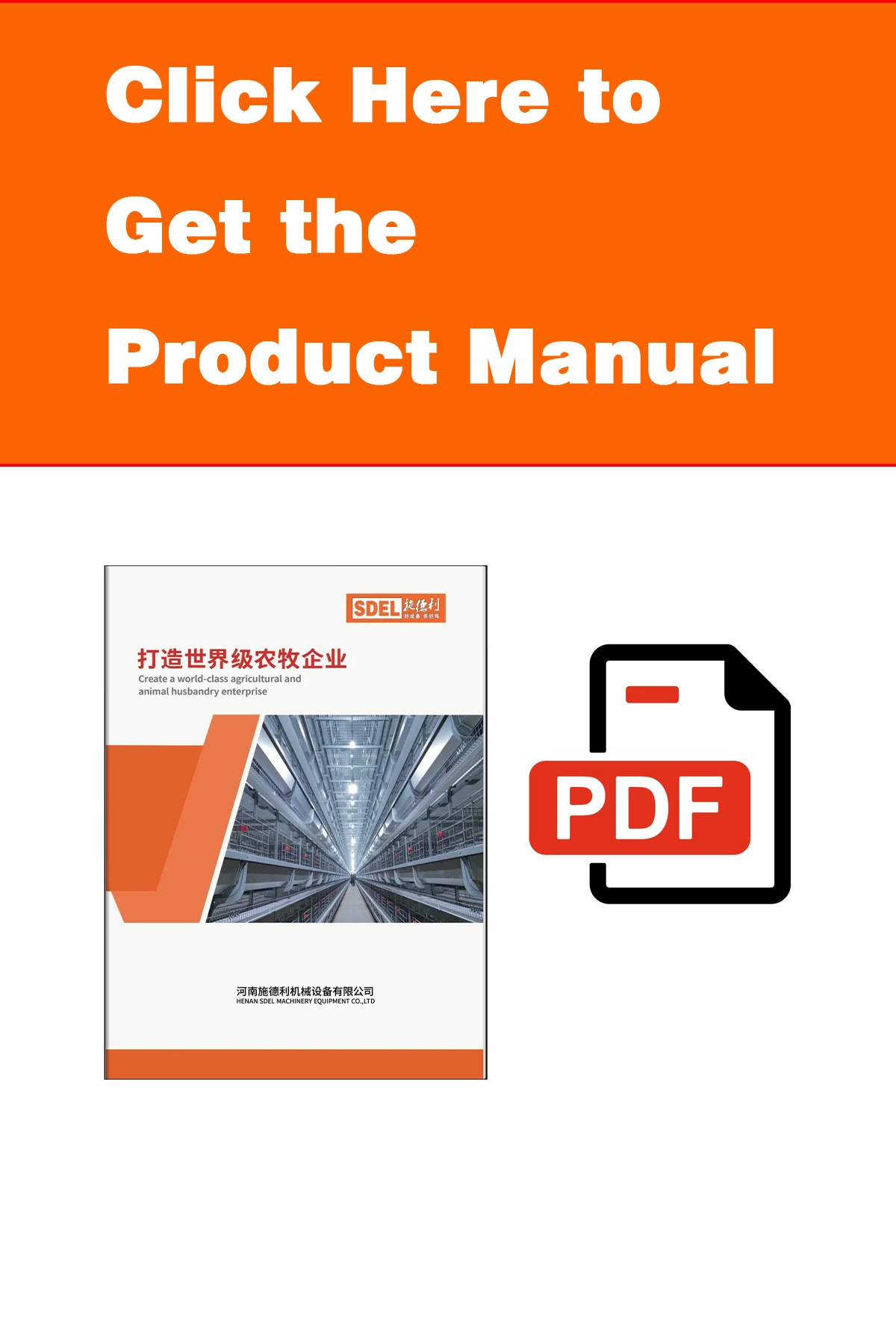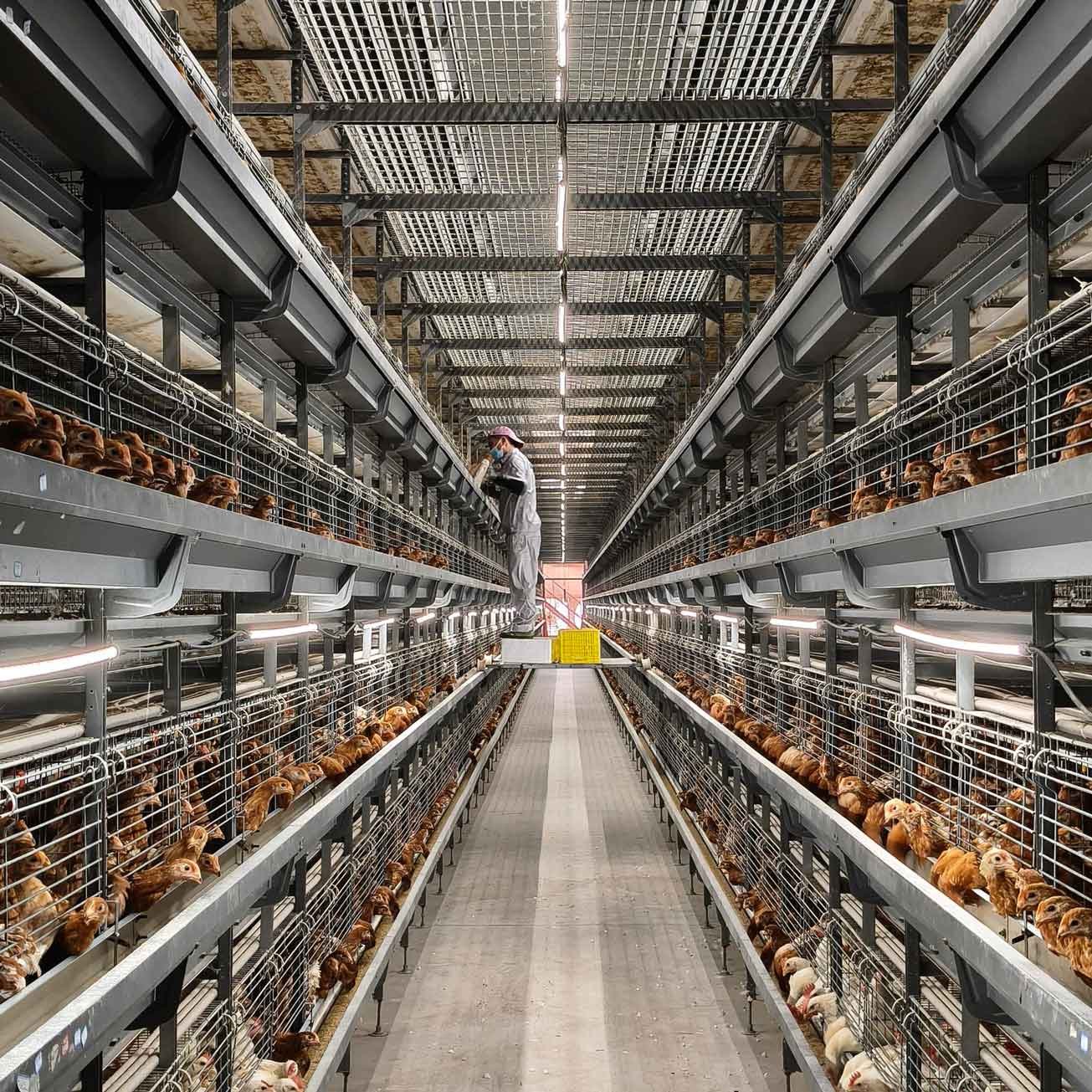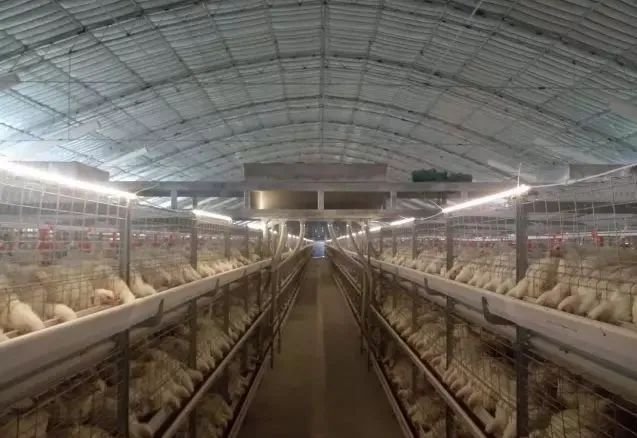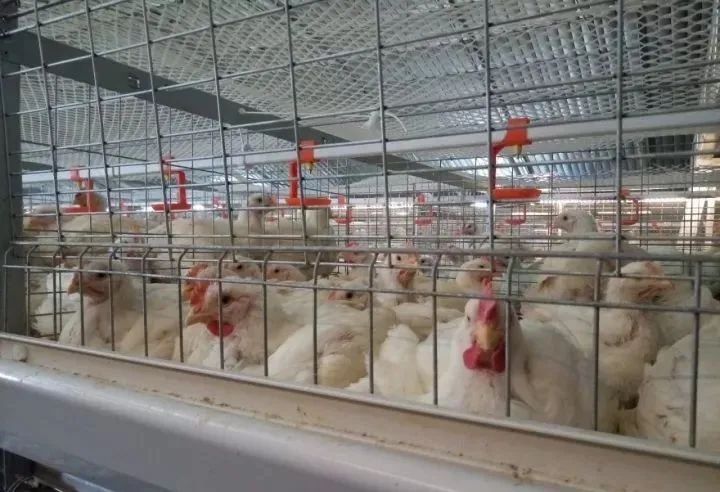With technological advancement, automation is gradually permeating the livestock breeding industry. automatic poultry farms not only reduces labor intensity for workers but also significantly saves human resources. Below, we introduce the breeding and management technology for the tiered cage laying hen system.
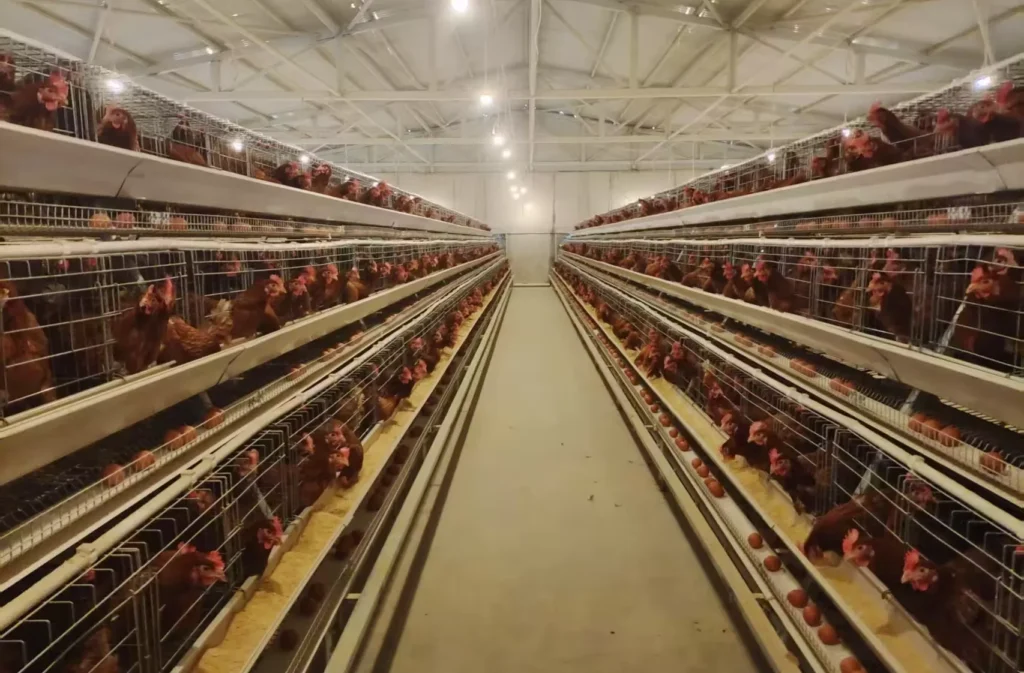
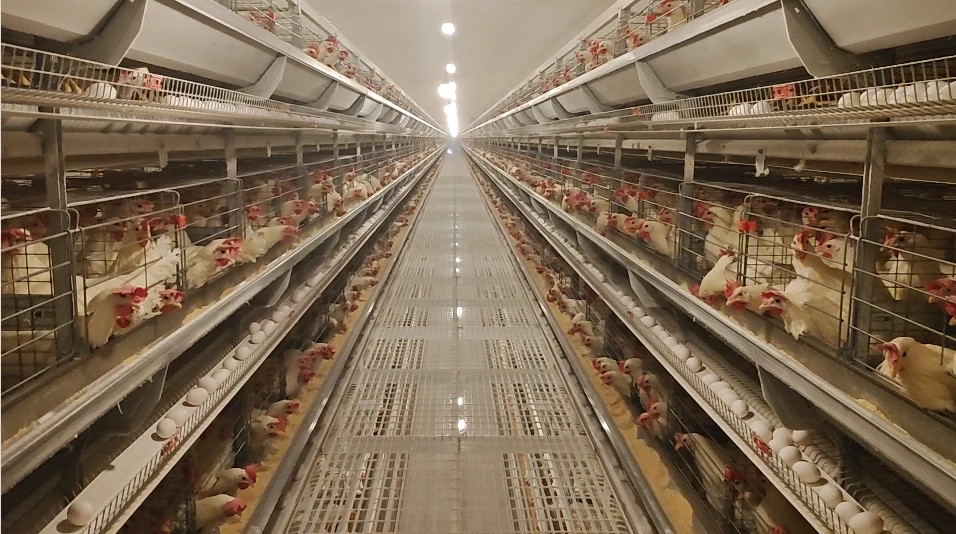
1 Advantages of the Tiered Cage Laying Hen System
Tiered cage laying hen equipment is currently the preferred choice for large-scale, intensive, automated, and standardized egg production both domestically and internationally. It offers the following advantages:
- Small footprint with high space utilization, facilitating intensive and large-scale farming.
- Manure is cleared layer by layer; natural air-drying substantially reduces moisture content, increasing manure utilization while minimizing environmental pollution.
- Full automation control drastically reduces operational staff, lowers labor intensity, and improves productivity.
- Fully enclosed breeding mode helps prevent infectious diseases and enhances flock production performance.
- Provides a foundational solution for establishing highly efficient automatic poultry farms.
2 Key Management Points for Flocks in Tiered Cage Systems
2.1 Timing for Transferring Hens to Cages
Due to the multi-tiered overlapping design, catching chickens is inconvenient. The transfer period can be extended until individual hens begin laying eggs. Before transfer, complete all necessary vaccinations (e.g., Newcastle Disease, Infectious Bronchitis, Avian Influenza, Egg Drop Syndrome).
2.2 Feed Transition
When the flock’s egg production rate reaches 5%, transition from pre-lay feed to peak feed. Allow a one-week transition period. Maintain high-quality feed with stable nutritional composition; avoid arbitrary changes to finished feed or raw ingredients.
2.3 Flock Observation
2.3.1 Observe Flock Mental State and Manure
At dawn after turning on lights, check for abnormal odors (e.g., foul, pungent, irritating), indicating poor ventilation or digestive diseases (e.g., Colibacillosis). Monitor manure color:
- Excessive yellow-green or yellow-white feces suggest significant stress or possible Newcastle Disease onset; conduct antibody testing immediately.
- Dry, scant feces indicate malfunctioning drinkers, water shortage, or inaccessible water after transfer.
- Remove lethargic or dead birds immediately; veterinarians should conduct autopsies and pathological examinations. Analyze data comprehensively to diagnose and control outbreaks.
(Image copyright: Huinong Net)
2.3.2 Listen for Respiratory Sounds
After lights-out, enter the coop cautiously to listen for abnormal sounds (e.g., sneezing, gurgling, coughing).
2.3.3 Feed and Water Intake
Ensure feeders and drinkers are appropriately positioned. Adjust waterline height promptly. Monitor feed consumption speed and volume to adjust stocking density.
2.3.4 Egg Production Status
Daily observe egg quantity, size, shell quality, color, breakage rate, and soft-shell ratio to assess feed and lighting efficacy and detect latent diseases.
2.4 Culling
Identify and cull sick, weak, or injured birds promptly; remove dead birds, focusing on upper tiers.
2.5 Regular Antibody Testing
Routinely test for Newcastle Disease and Avian Influenza antibodies; vaccinate based on titer changes.
2.6 Handling Broken/Soft-Shell Eggs
Remove broken and soft-shell eggs early to prevent fluid leakage during transport, which contaminates intact eggs and conveyors.
2.7 Late-Stage Management & Afternoon Calcium Supplementation
As hens age, calcium absorption declines, affecting shell quality. Enhanced late-stage management is crucial for maintaining production and reducing breakage.
- Add 0.01%–0.015% Vitamin AD₃ powder to feed to aid calcium absorption.
- Timing matters: Hens require continuous calcium during the 16-hour shell calcification period. Most hens initiate shell formation in the afternoon; insufficient calcium supply from afternoon to dusk compromises calcification.
- Supplement large-particle oyster shell grit or limestone powder around 5:00 PM (≈3–4 kg daily per 4,000 hens) to significantly improve shell quality and reduce breakage.
3 Equipment Use and Maintenance in Tiered Cage Systems
High stocking density demands strict facility maintenance to prevent accidents. Key considerations:
3.1 Power Security System
Install generators matching farm capacity with automatic switchover capability.
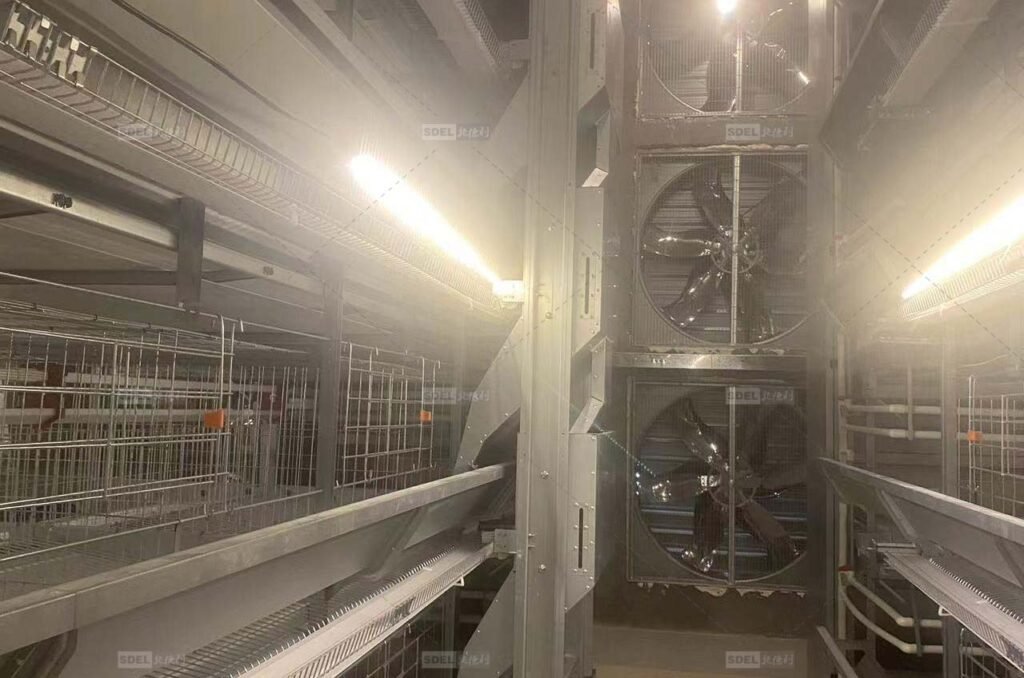
3.2 Lighting
Ensure uniform distribution using staggered bulbs or strip lights.
3.3 Feed Conveying System
Fully automated process:
- Feed trucks deliver to external storage silos.
- Horizontal conveyors transfer feed to trolley hoppers per schedule.
- Feed trolleys distribute feed evenly along troughs via layered hoppers.
- Post-consumption, trolleys return to starting position.
Feeding frequency is farm-specific.
—Core automation enabling modern automatic poultry farms.
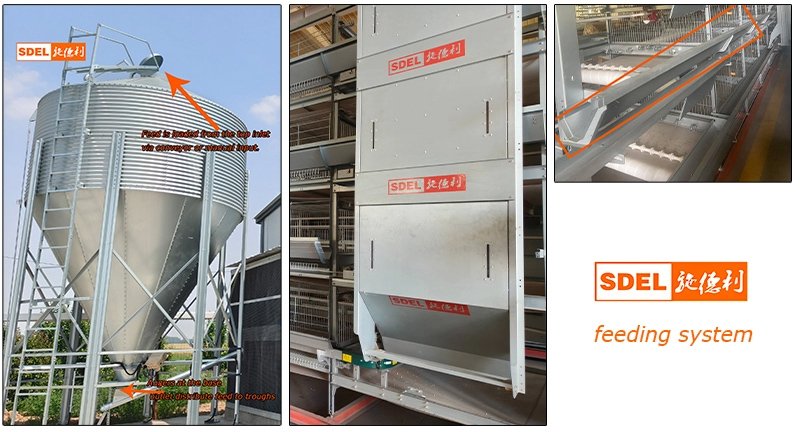
3.4 Automated Watering System
- Water lines run centrally above each tier; two nipples per cage supply water.
- V-shaped trays beneath nipples catch spills for evaporation, keeping manure drier.
- In-line components: Filters, smart water meters (monitor consumption/health), medicators, pressure reducers.
- Manure belts under each tier capture scattered droppings.
- Vertical airflow evaporates moisture in-house, yielding low-odor, dry manure ideal for reuse.
- Ammonia levels remain minimal, optimizing flock health.
3.6 Automated Egg Collection/Transport
Critical for minimizing breakage:
3.6.1 Soft-Broken Egg Remover
- Issue: Soft-shell eggs jam collectors by failing to roll.
- Solution: Install pre-collector removers to eliminate blockages.
3.6.2 Egg Diverters at Transfer Points
- Issue: Forceful rolling causes collisions during transfer to central lines.
- Solution: Diverters align eggs gently onto central conveyors without impact.
—These innovations save labor and reduce breakage in automatic poultry farms.
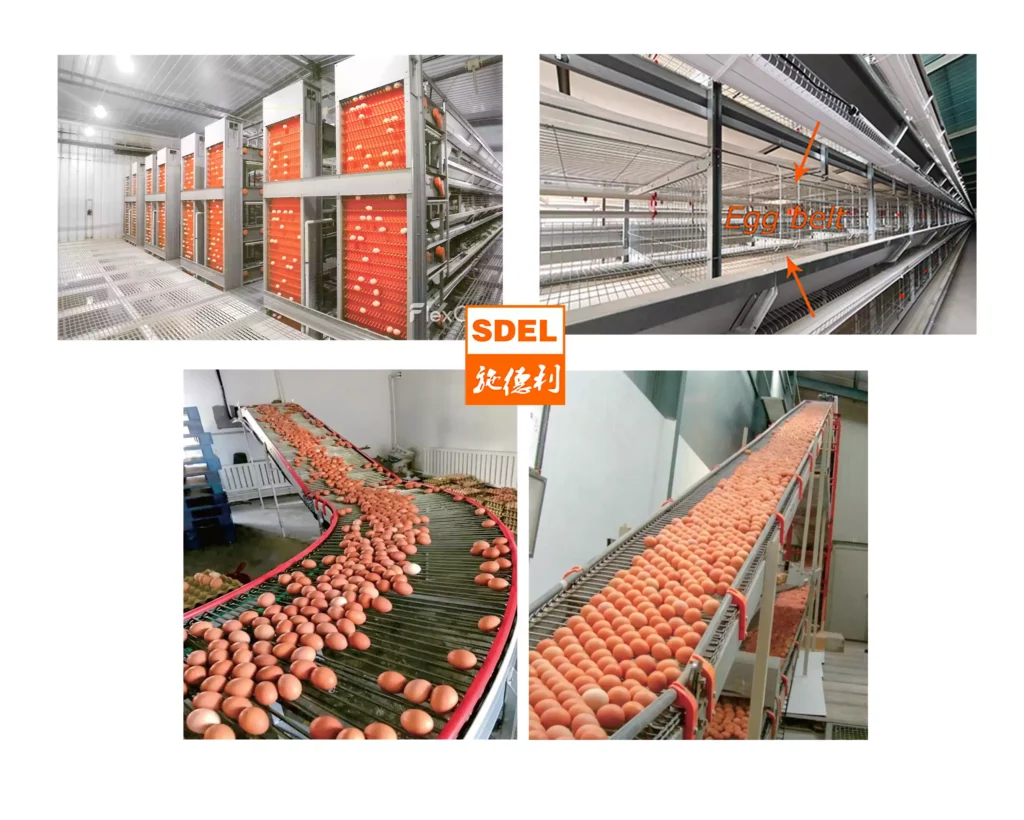
3.7 Automated Ventilation/Cooling
- Essential for environmentally controlled housing in high-density systems.
- Designs must accommodate regional climates: Prioritize cooling in Southern China; ventilation in Northern China.
3.8 Maintenance
Monthly tasks:
- Lubricate transmission chains/gears in drive boxes, central egg collectors, manure/egg transport systems.
- Clean egg/manure rollers to prevent debris-induced belt/axle damage.
- Clear debris from soft/broken egg trays.
- Adjust sidewall/roof vents seasonally.
- Wipe light bulbs regularly to maintain intensity.
3.9 Common Faults & Solutions
| Fault | Cause | Solution |
|---|---|---|
| Manure belt stationary | Excessive manure; loose rollers; debris | Run belt regularly; tighten tension bolts; clear debris |
| Feed cart immobile | Rope slack; switch misalignment; track jam; motor failure | Tighten rope; adjust switch; realign tracks; replace motor |
| Watery manure | Leaky drinkers; poor tray seals; diarrhea | Replace drinkers; seal joints; administer medication |
| High breakage rate | Pecking; thin shells; broken egg claws; collisions | Install electric wires; adjust feed; replace claws; add cushioning dividers |
| Belt misalignment | Non-parallel rollers; uneven length; bent frames | Adjust roller bolts; reweld joints; straighten frames |
3.10 Safety Precautions
- NEVER inspect operating equipment near moving parts or open access panels.
- ALWAYS disconnect and LOCK OUT main power before maintenance—failure risks severe injury.
- Regularly test limit switches (head/tail) for feed carts; replace faulty switches immediately to prevent cart damage.
The tiered cage laying hen system is widely embraced by egg producers with promising growth prospects. Progressive large-scale farms should consider adopting this automated poultry farming production technology.

